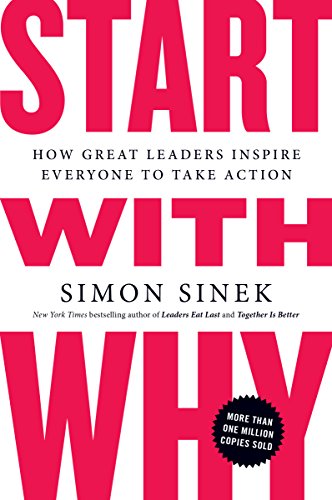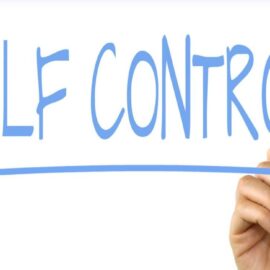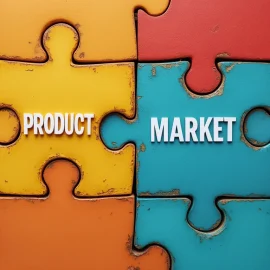

This article is an excerpt from the Shortform summary of "Start With Why" by Simon Sinek. Shortform has the world's best summaries of books you should be reading.
Like this article? Sign up for a free trial here .
What is the celery test? How can it help you make better decisions, in life and in business?
The celery test is a tool to help you make better decisions by understanding the purpose behind the decision. The celery test was made popular by Simon Sinek in his book Start with Why.
We’ll cover the celery test analogy and how to use it to make good decisions. Then we’ll look at an example of how the celery test is used in making business decisions.
The Celery Test
Trying to communicate your WHY effectively and make decisions in accordance with WHY can feel overwhelming. That’s why Sinek developed the Celery Test, a heuristic to determine what communications “best practices” really are the best practices for your business.
Here’s how the Celery Test works: imagine you’re starting a new health food store. Your WHY is to sell foods that are healthy and improve people’s well-being. You go to a dinner party where people give you advice about your new health food store. One person approaches you and tells you that you need more M&Ms, another person suggests adding celery instead, and a third person tells you to buy Oreos.
All of these people are successful and give good advice, so it’s tempting to go right out to the supermarket and buy exactly what they recommended. But that will result in purchasing an armful of mismatched products which might not add value to your organization.
The better tactic is to go into both the grocery store knowing your WHY. If the WHY of your health food store is to make sure people have access to healthy food, then the answer is obvious – you don’t need M&Ms or Oreos, but you buy the celery. In essence, the Celery Test acts as a filter to whittle down all the possible options into only the few that support your WHY.
Case in point – celery being the right answer was probably obvious to you when you first read the scenario. That’s the magic of a clear, concise heuristic – it makes decision making easy, because you know what decisions align with your WHY, and which ones don’t.
The Celery Test works for both short-term and long-term decisions:
- Short-term decisions. Sometimes you have to make decisions that don’t align with your mission. It’s the equivalent of eating a piece of chocolate cake when you’re on a diet: you know that it’s not in line with your WHY, so you understand it’s just a temporary fix. The Celery Test, then, can help you keep these types of short-term decisions to a minimum and help you adhere to the path to a better, long-term solution.
- Long-term decisions. Sometimes, the long-term decision you need to make seem scary or require a lot of investment, like opening new locations or creating a new product. But if those tough decisions pass The Celery Test, it gives you the confidence to dive in.
Other advantages of The Celery Test Method include:
- spending less time at the metaphorical supermarket (you know what you need)
- getting value out of your investments (they’re right for your company)
- showing your WHY through your actions (making decisions that align with your beliefs)
Obviously, not every company or organization is looking for healthy foods. But every organization should have a WHY. That’s what makes The Celery Test–which puts your WHY front and center–a great filter for your decision-making process.
Because of its simplicity, the Celery Test scales well to fit your entire organization. For people who create the HOW and people who execute the WHAT, knowing a clear, simple WHY makes decision making easy for them on a day-to-day basis.
Examples of Celery Tests
Here are two examples of companies that have passed (and failed) The Celery Test:
Disney: Disney’s strong WHY is to produce family friendly entertainment. This WHY is apparent to all its audience members and has been demonstrated over decades of discipline and consistency. Because of that, parents rarely worry about taking their kids to Disney movies or buying Disney products. Disney passes the Celery Test of whether its products are family friendly.
Volkswagen: Volkswagen is a company known for its friendliness to people, mass appeal, and hippie ideals (picture the VW van common in the 1970s). In 2004, they introduced the Phaeton, a $70,000 luxury car. The problem? Volkswagen’s WHY was making great cars for everyday people. The product didn’t align with their WHY, so it didn’t succeed. Had they used the Celery Test, they could have ruled out the Phaeton as incompatible with their mission.
- In contrast, Toyota created an entirely new brand, Lexus, to create luxury cars.
The celery test can help you make better decisions and focus on what matters.
———End of Preview———

Like what you just read? Read the rest of the world's best summary of "Start With Why" at Shortform . Learn the book's critical concepts in 20 minutes or less .
Here's what you'll find in our full Start With Why summary :
- What Steve Jobs did right compared to every other business leader
- How to define your organization's WHY
- How to help your organization avoid losing its edge as it succeeds






